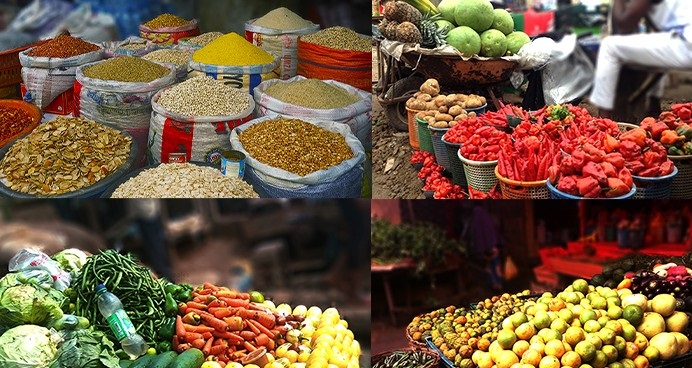Nigeria’s inflation rate declined to 22.97 percent in May 2025, according to data released by the National Bureau of Statistics (NBS) on Monday.
The figure represents a 0.74 percentage point drop from the 23.71 percent recorded in April 2025. On a year-on-year basis, headline inflation fell sharply by 10.98 percentage points from 33.95 percent in May 2024.
The NBS’s Consumer Price Index (CPI) report for May 2025 noted, “In May 2025, the headline inflation rate eased to 22.97 percent from 23.71 percent in April. This reflects a 0.74 percentage point decrease.”
The decline was largely attributed to a slowdown in the rate of increase in average prices of goods and services.
On a month-on-month basis, headline inflation stood at 1.53 percent in May, down from 1.86 percent in April. While prices continued to rise, the pace of increase slowed.
Food inflation, a major driver of overall inflation, stood at 21.14 percent year-on-year in May, a significant drop from 40.66 percent recorded in the same month last year. The sharp annual decline was largely due to a change in the base year following the CPI rebasing.
However, month-on-month food inflation rose slightly to 2.19 percent in May from 2.06 percent in April, driven by price increases in staples such as yam, cassava, maize flour, sweet potatoes, fresh pepper, and ogbono.
Urban inflation fell to 23.14 percent year-on-year in May from 36.34 percent in May 2024. Monthly urban inflation, however, edged up to 1.40 percent from 1.18 percent in April.
Rural inflation declined to 22.70 percent year-on-year, down from 31.82 percent in May 2024. Month-on-month rural inflation slowed significantly to 1.83 percent from 3.56 percent the previous month.
Core inflation, which excludes volatile items like agricultural produce and energy, dropped to 22.28 percent in May from 27.04 percent in May 2024. Month-on-month core inflation also declined to 1.10 percent from 1.34 percent in April.
Food and non-alcoholic beverages remained the largest contributor to headline inflation, accounting for 9.20 percentage points. Other significant contributors included restaurants and accommodation services (2.97 percentage points), transport (2.45 percentage points), housing, water, electricity, gas, and other fuels (1.93 percentage points), and education (1.42 percentage points).
The report highlighted regional disparities in inflation rates. Bayelsa recorded the highest monthly rise in headline inflation at 9.11 percent, followed by Bauchi at 4.85 percent and Borno at 4.42 percent. Kaduna, Jigawa, and Edo saw the steepest monthly declines at -6.75 percent, -4.40 percent, and -2.94 percent respectively.
For food inflation, Borno State had the highest year-on-year rate at 64.36 percent, followed by Bayelsa at 39.85 percent and Taraba at 38.58 percent. The slowest food inflation increases were recorded in Katsina (6.90 percent), Rivers (9.18 percent), and Kwara (11.31 percent).
On a monthly basis, Bayelsa (12.68 percent), Cross River (11.15 percent), and Anambra (9.10 percent) posted the highest food inflation rates, while Katsina (-5.42 percent), Jigawa (-4.02 percent), and Kaduna (-3.27 percent) experienced declines.
Despite the apparent relief from the CPI rebasing, the persistent monthly rise in food and essential commodity prices continues to strain the cost of living for many Nigerians across the country.


